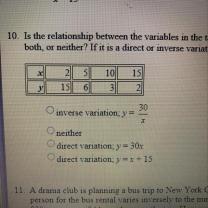What is a natural log equation?
A natural logarithmic equation, often written as "ln," is an equation that involves the natural logarithm function. The natural logarithm, denoted as "ln," is the logarithm to the base "e," where "e" is approximately equal to 2.71828. Natural logarithms are commonly used in mathematics and science to solve problems involving exponential growth or decay, as well as to analyze various types of data.
The general form of a natural logarithmic equation is:
ln(x) = y
In this equation:
- "ln" represents the natural logarithm function.
- "x" is the input or argument of the natural logarithm, and it must be a positive real number (x > 0) since the natural logarithm is undefined for non-positive values.
- "y" is the result or output of the natural logarithm, which is the exponent to which "e" must be raised to obtain "x."
To solve a natural logarithmic equation for "x," you can use the inverse of the natural logarithm, which is the exponential function. The exponential function, denoted as "e^x," is used to undo the effects of the natural logarithm. Here's how you can solve a natural logarithmic equation step by step:
Step 1: Write the Equation:
- Start with the given natural logarithmic equation.
Step 2: Isolate the Natural Logarithm:
- To isolate the natural logarithm, apply the exponential function (e^x) to both sides of the equation.
e^(ln(x)) = e^y
Step 3: Simplify the Left Side:
- Since the natural logarithm and the exponential function are inverse operations, they cancel each other out on the left side of the equation, leaving you with:
x = e^y
Step 4: Evaluate the Right Side:
- Evaluate the right side of the equation by raising "e" to the power of "y." This gives you the value of "x."
Step 5: Final Solution:
- The solution to the natural logarithmic equation is the value of "x" that you obtained in step 4.
Natural logarithmic equations often arise in various fields of science, including physics, chemistry, biology, and economics, where exponential growth or decay models are common. Solving these equations helps in understanding and predicting natural phenomena and processes that exhibit exponential behavior.












